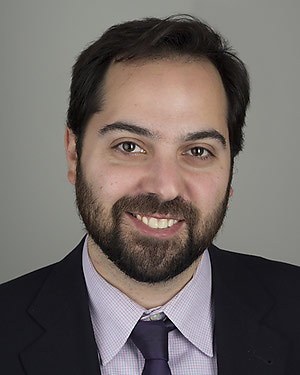Takeaway
Little by little, chronic disease can eat away at a patient’s sense of self. The best antidote can be a doctor who empathizes with the patient’s subjective experience.

Lifelong Learning in Clinical Excellence | November 1, 2018 | 2 min read
By Adam P. Stern, MD, Harvard Medical School
In the recent A Piece of My Mind essay, I wrote about the creeping dread of being a patient who feels carved up over time by disease and treatment. The piece touches upon several themes that can help to inform patient care.
Desensitization
Just as medical students grow comfortable with their hands exploring a cadaver’s viscera over the course of a semester, doctors can become desensitized to the gravity of the illnesses they treat, the words they offer, and treatments they employ.
Doctors who have seen thousands of patients all along the spectrum of illness, for example, may view a particular individual as “low risk” or as having a “good prognosis,” while the patient – an n of 1 – will focus entirely on the ways in which their world has been rocked.
Desensitization is a necessary component of medical practice – doctors need to separate themselves emotionally from the emotionally devastating aspects of their work – but it must also be acknowledged and at times guarded against. No patient yearns to be only a Medical Record Number in the eyes of their doctors.
Routine
For the patients who undergo treatments, whether curative or palliative, it can feel as though more than just a part of their body has been taken. It can feel like little solace that the procedure involved may have been quite routine for the surgeon who performed it or that the outcome was successful if the goal was to remove part of an organ. What stays with the patient emotionally after their physical recovery, is sometimes the gnawing awareness that they used to be whole and now they are incomplete.
The examples used in The Giving Body ranged from having a total nephrectomy, to the iatrogenic destruction of a thyroid, to the mundane but impossibly irritating effects on the skin, all the way to the imagined possibility of total blindness. The range of ailments that followed treatment for an underlying pathology spanned organ systems and intensities but all paled in comparison to the an encompassing threat of the original malignancy.
Patients often begin by thinking that they would do anything to survive, and over time it can become apparent how naïve this approach is. Over the course of a patient’s entire treatment, doctors owe it to their patients to join them in their journeys and meet them where they are when treatment planning occurs. What may be routine for the doctor may not be for the patient, and the opposite can also be true.
Respite
All patients with chronic illness are forced to strike a balance between living with their disease and continuing with the rest of their lives. To some, illnesses can seem all-consuming, and patients and especially caretakers may even thrive in diving headfirst into learning more about the illness and finding ways of exerting control over it. Others do best by pursuing just the opposite path, avoiding the topic entirely except at doctor’s visits and when absolutely necessary. There is no right approach for every individual. Some fortunate patients, though, have a part of their lives that is inherently unencumbered by their illness.
I wrote in The Giving Body about how my little boy is the only person in my life who is completely unaware that I’m sick, and what a wonderful blessing that is for me. Spending time fully engaged with him is more therapeutic than anything else in my life. As doctors, we should be watchful and encouraging of such unadulterated segments of our patients lives.

